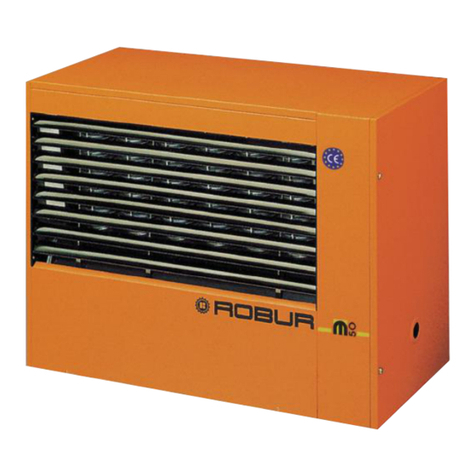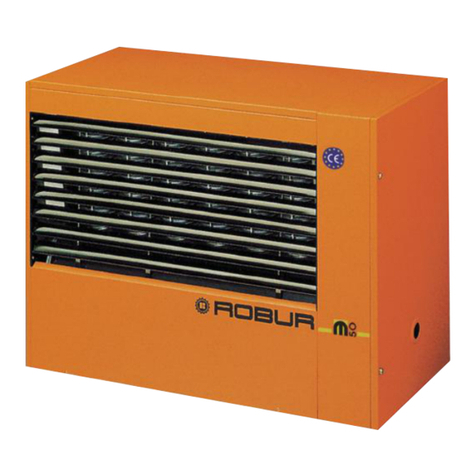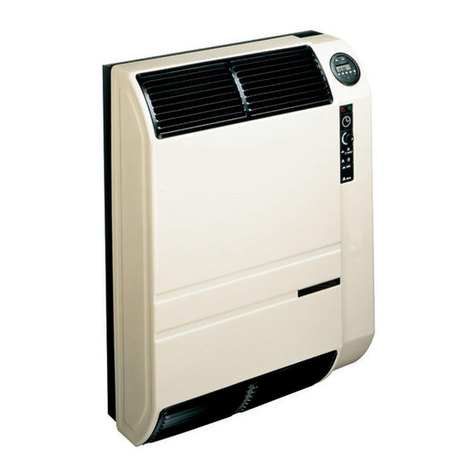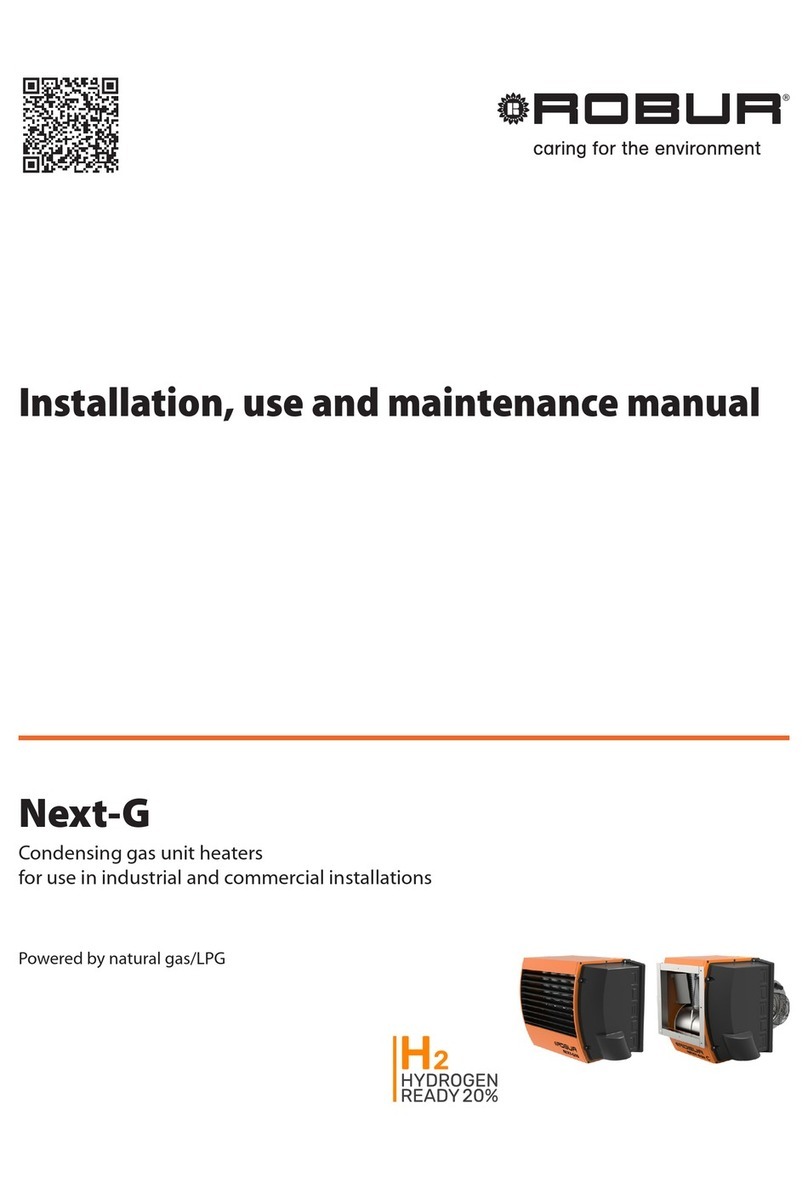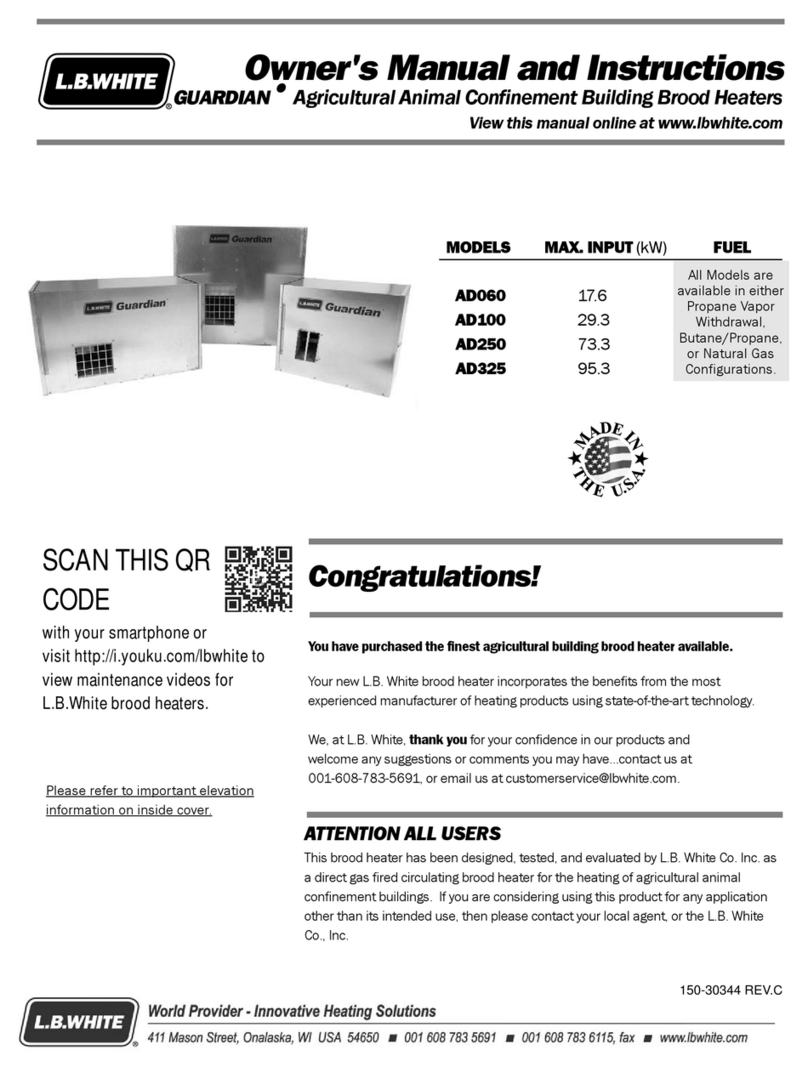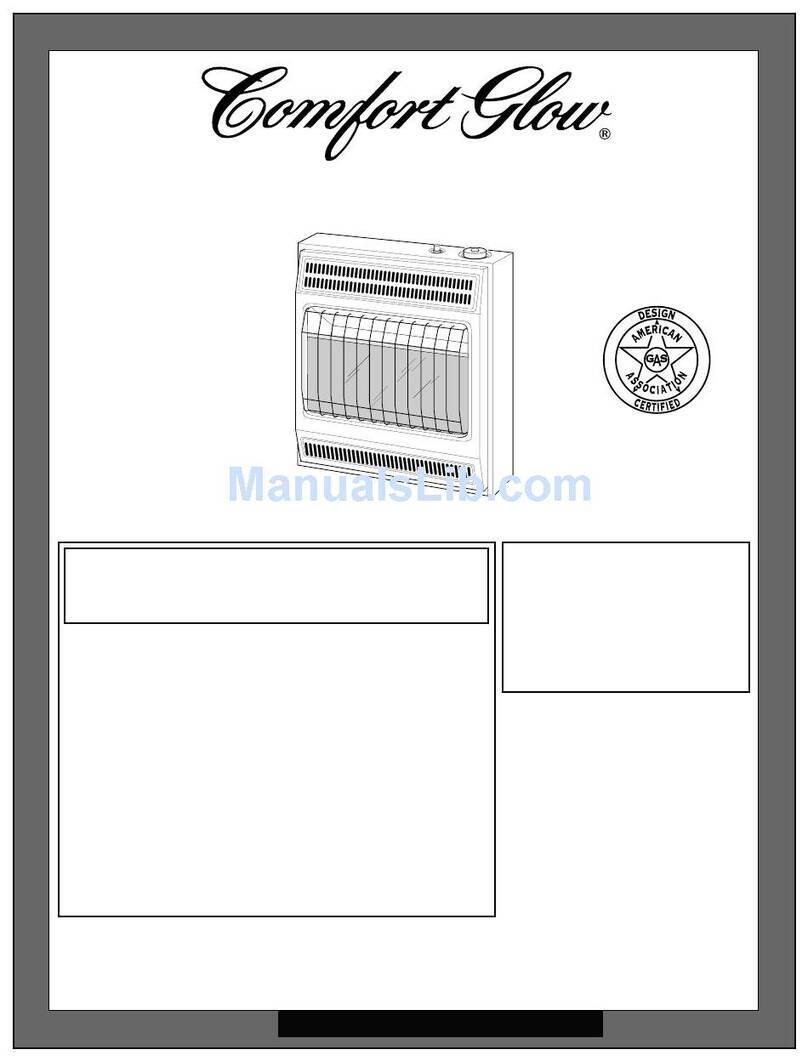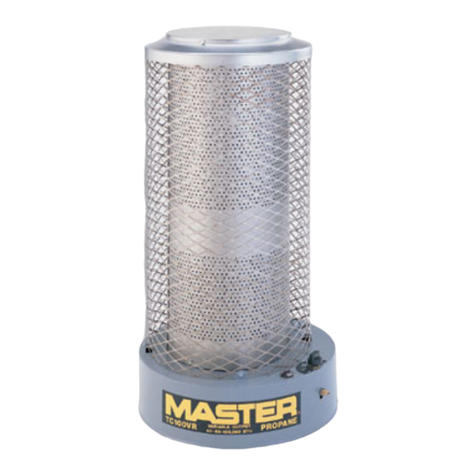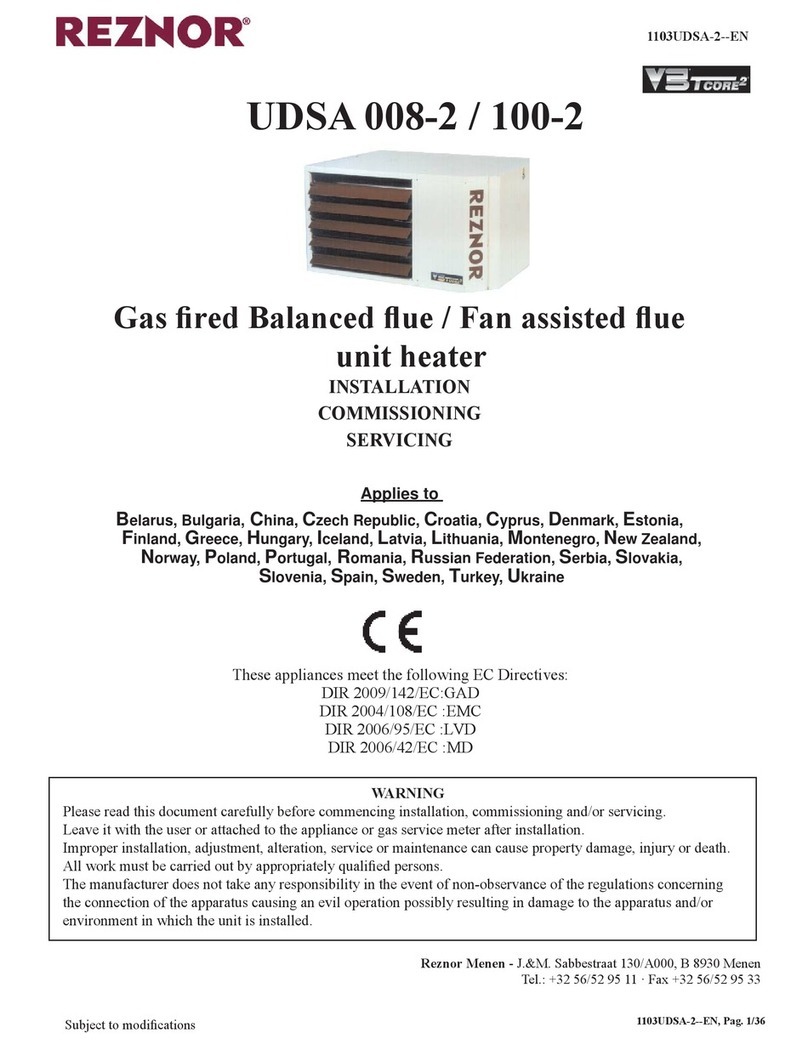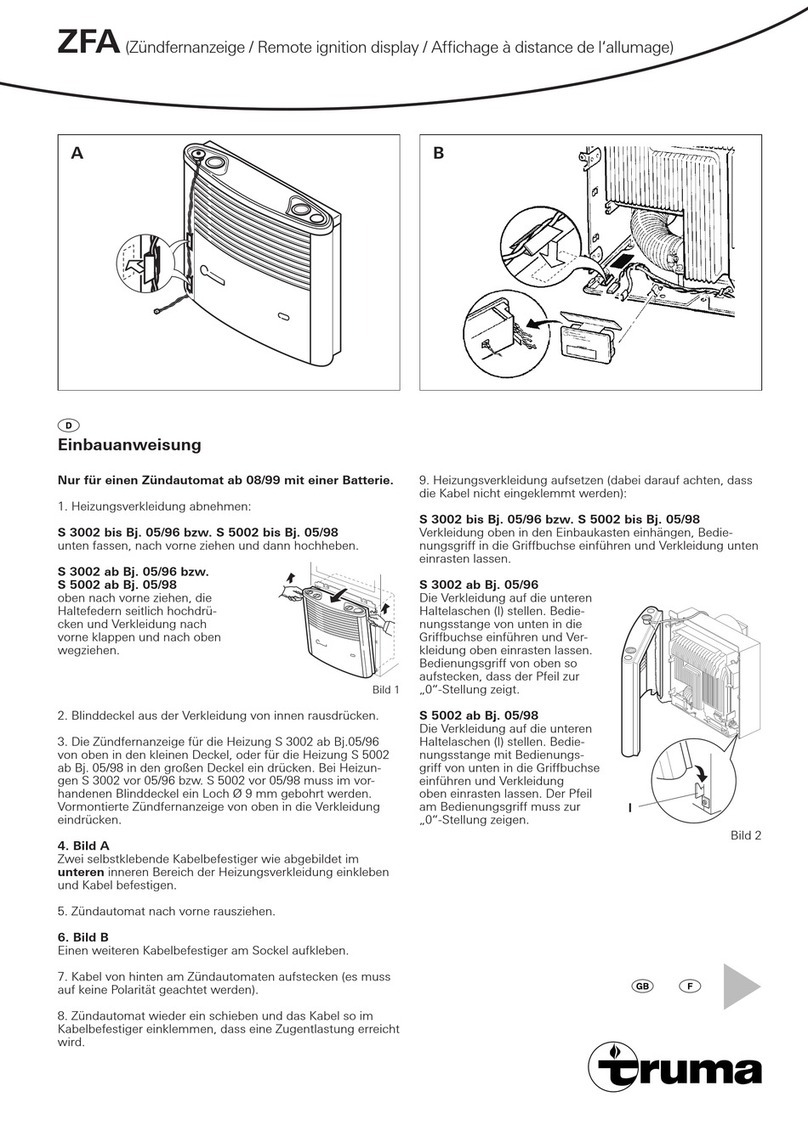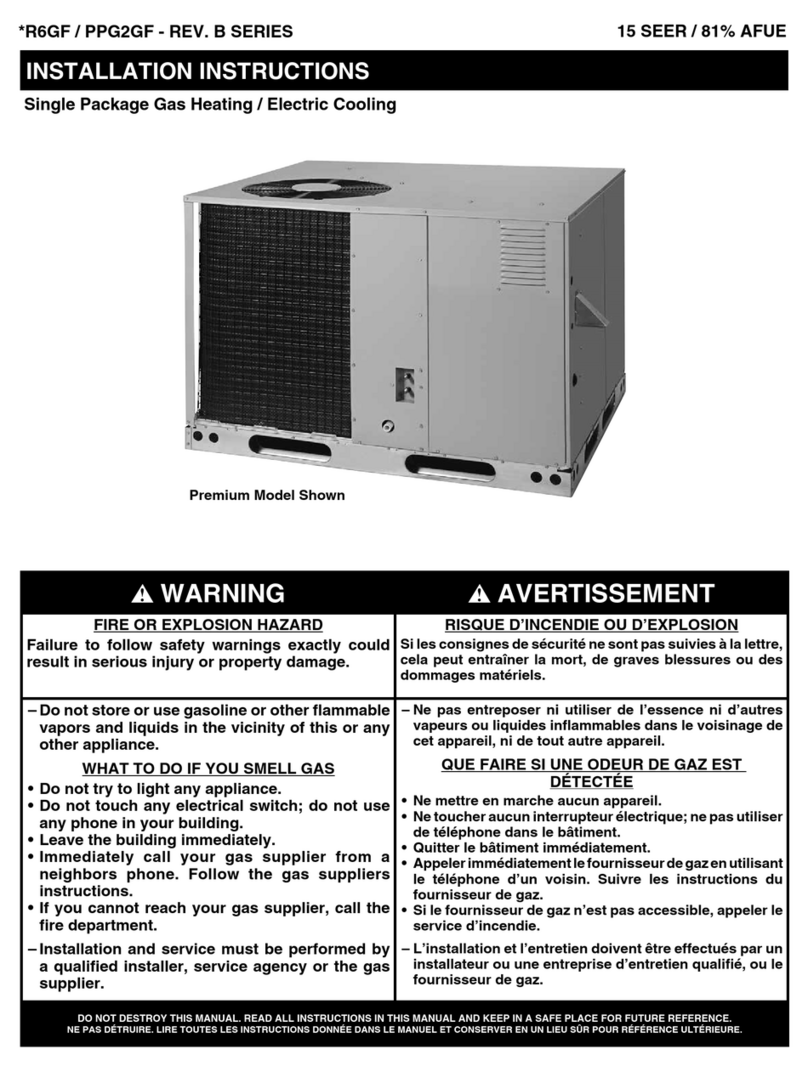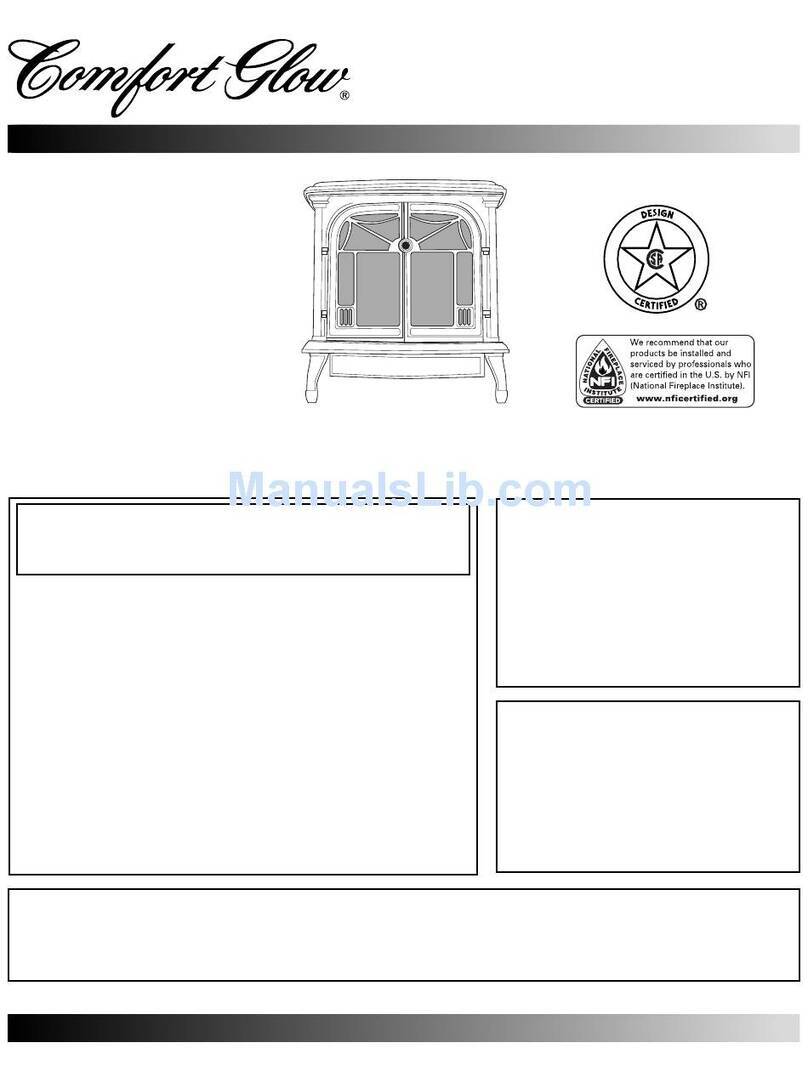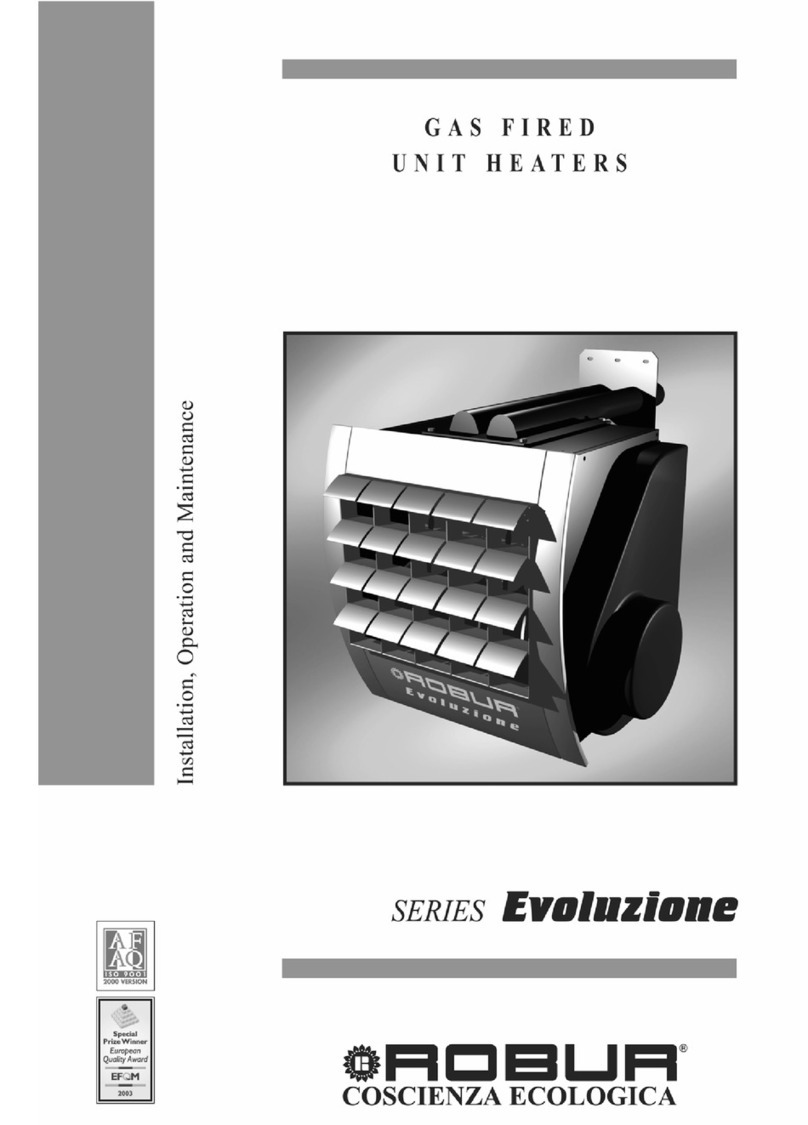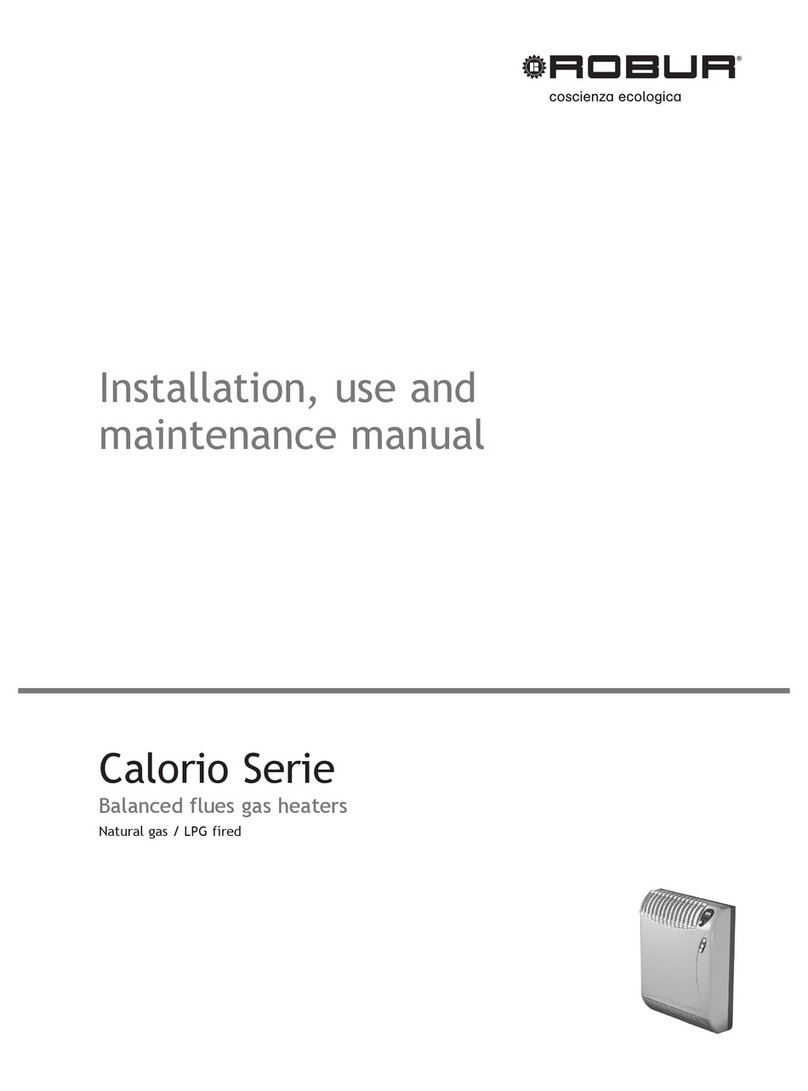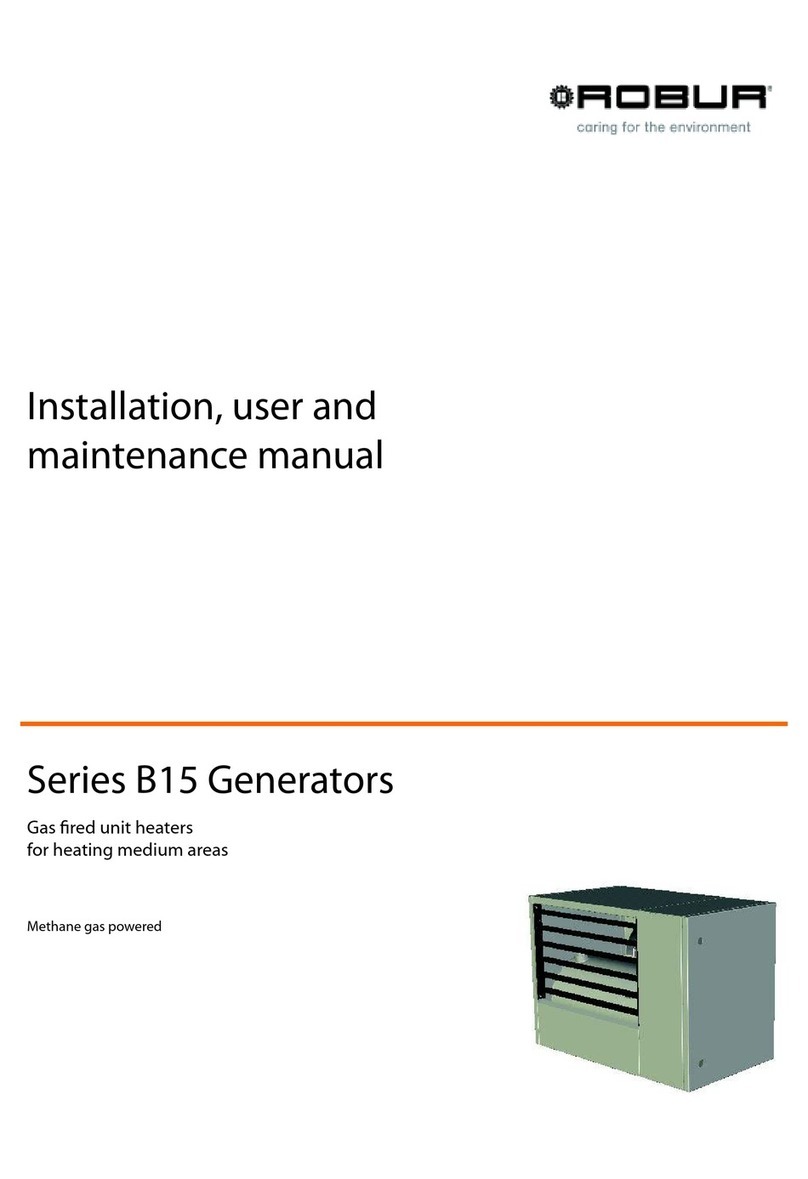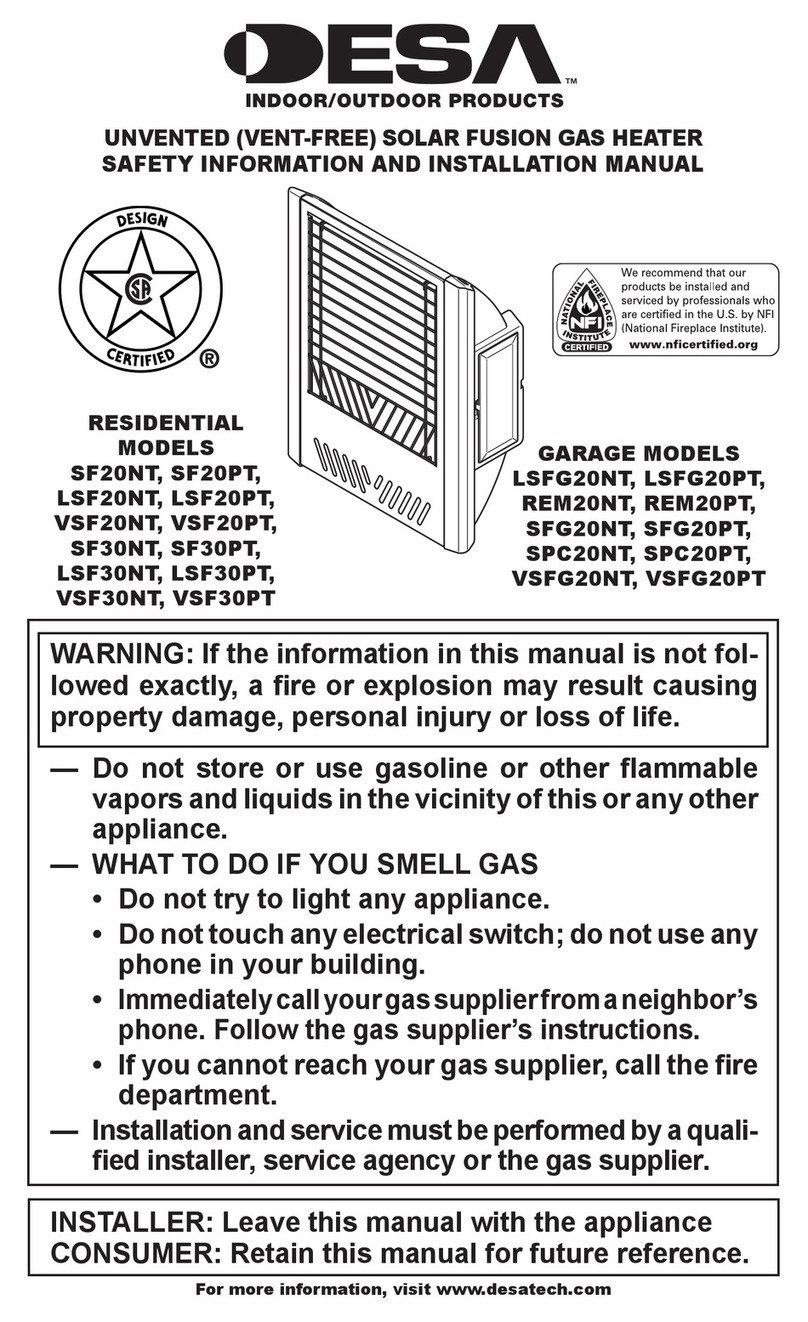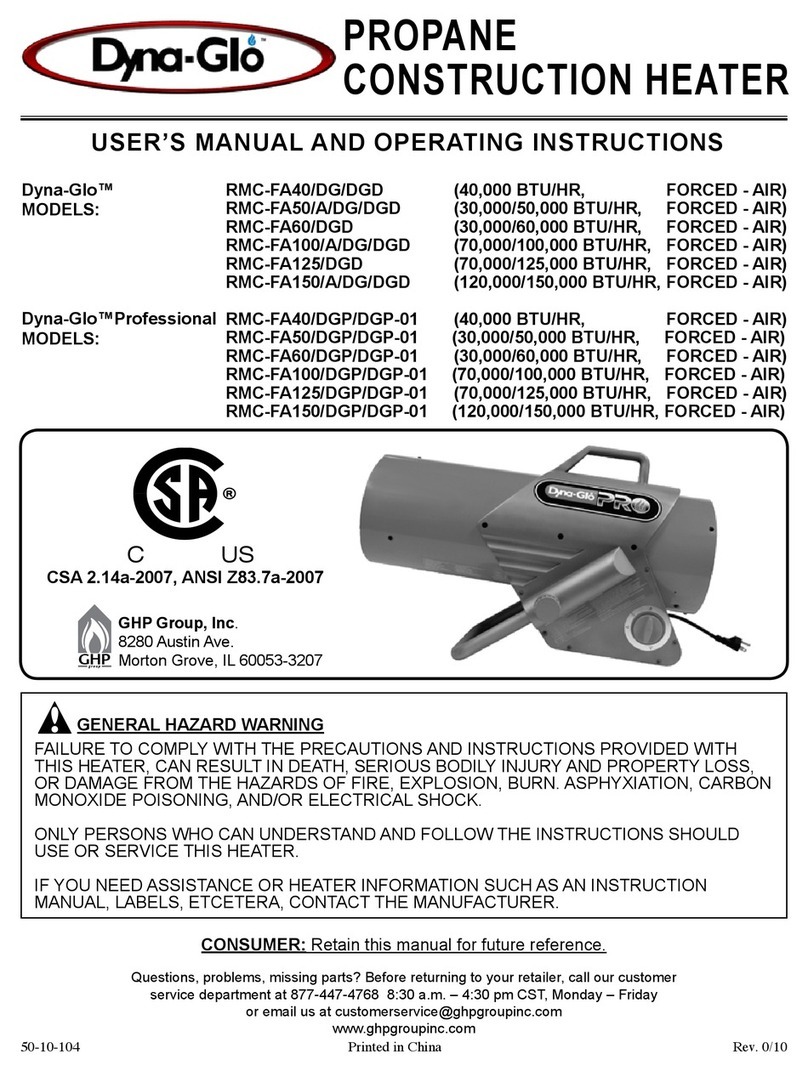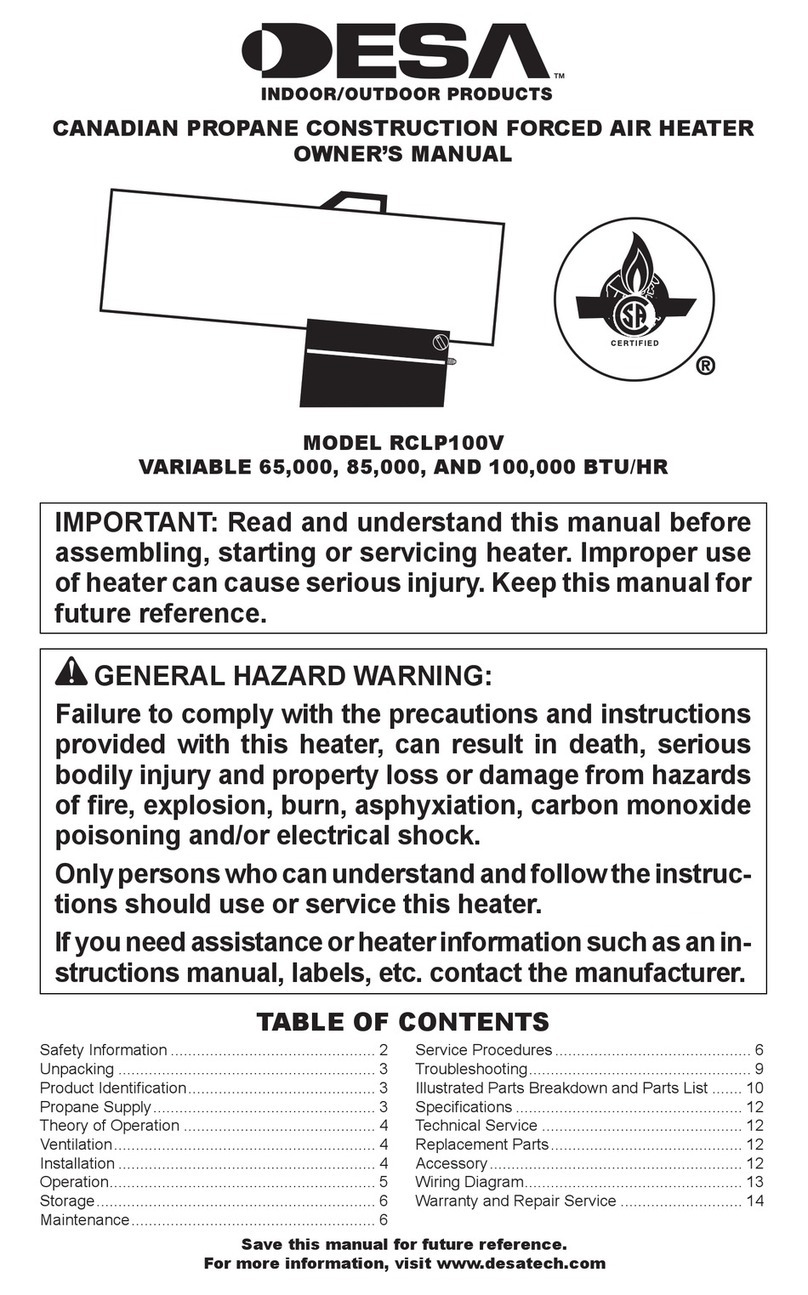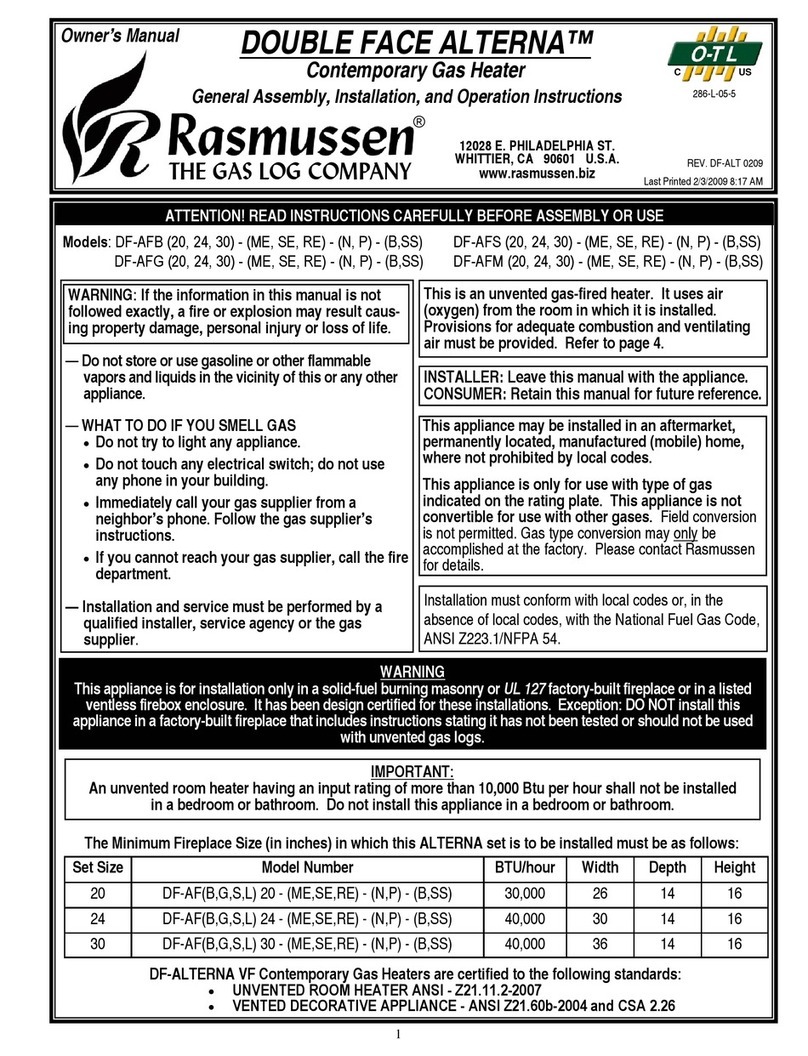
OTRG005
OTRG005 thermoregulator
6Rev.: F
Cod.: D-FST422 22 MCL SDC 008 29/04/2022
sucient to cover the demand) unit it reacher
again point 2 (18 °C) again, repeating the hystere-
sis cycle.
b. The heat supplied by the gas unit heater in mo-
dulation is not sucient to cover the demand, so
the room temperature continues to decrease until
point 4 (16 °C), reaching the dierential value (2
°C), then the gas unit heater switches to the maxi-
mum power to try to restore the required setpoint.
8.2 MODULATION MANAGEMENT
The gas unit heater operation can be set using the Mo pa-
rameter (Paragraph 10
p.11
):
▶
with modulation (Mo set to 1)
▶
always at minimum power (Mo set to 0)
▶
always at maximum power (Mo set to 2)
When the Mo parameter is set to 1, the burner operates in
modulation: if the room temperature is lower than that of
the setpoint minus the Di dierential, the burner operates
at the maximum power. Once the dierential threshold is
achieved, the burner enters in modulation until the set-
point temperature is achieved, and then it will switch o.
Modulation is disabled if the anti-condensation mode is
active (Paragraph 8.3
p.6
).
Anyway, when the setpoint temperature is achieved, the
gas unit heater will switch o.
8.3 ANTICONDENSATION MODE
MANAGEMENT
If the gas unit heater is set to modulation (parameter Mo
set to 1), it is possible to ensure that the gas unit heater al-
ways remains at maximum power below a given ambient
temperature, in order to avoid potential condensation.
To activate this operating mode, set the AC parameter
(Paragraph 10
p.11
) to a value other than of.
The value of the AC parameter corresponds to the am-
bient temperature below which the gas unit heater will
always be at maximum power. Above this, the gas unit
heater operation will be modulating.
8.4 KEYBOARD LOCK
This function, if enabled via the LF parameter (Paragraph
10
p. 11
), allows you to inhibit the use of the keys, to
prevent unwanted changes to the settings.
The keypad lock is highlighted by the ashing decimal
point (Figure 8.2
p.6
).
Figure8.2Display with locked keyboard
The keypad lock remains active even if the device is
restarted.
Keypad unlock
Press the and + keys simultaneously for 15 sec-
onds.
The key symbol is shown for 2 seconds on
the display.
The keypad is now operational again.
If no key is pressed for 1 minute, the keypad lock
is restored.
The keypad lock function is not activated when you
are in the parameter menu.
8.5 LOCAL MODE
In this mode the device is able to:
▶
Switch the gas unit heater on and o.
▶
Perform the reset of any gas unit heater lockout (when
possible).
▶
Adjust the room temperature.
▶
Modulate the burner of the connected gas unit heater
(using the Mo parameter, Paragraph 10
p.11
).
The local mode is suitable to standalone operation (nei-
ther OpenTherm nor Modbus connection).
Using the - (decrease) and + (increase) buttons (Figure
4.1
p. 2
) it is possibile to adjust the setpoint tempera-
ture (Ht) for space heating (range 10÷30 °C) or to activate
summer ventilation (CL setpoint, < 10 °C).
In summer ventilation mode (CL setpoint), the fan of the
gas unit heater is always on.
During heating mode theroomtemperature, measured by
the NTC temperature probe, is always compared with the
required setpoint, managing the start or stop of the burn-
er according to the diagram shown in Figure 8.3
p.6
.
Figure8.3Burner status depending on ambient temperature
Hy Temperature hysteresis
Tamb Ambient temperature
Tsetpoint Setpoint
on
Hy
Tsetpoint - Hy
Tamb
HY represents the temperature hysteresis, i.e. a threshold
which avoids the continuous switching on/o of the gas
unit heater in the presence of a room temperature close
to the setpoint (this value can be set via the user interface,
Paragraph 10
p.11
).
For further details on the hysteresis temperature opera-
tion refer to Paragraph 8.1
p.5
.
The value of the Di dierential can be modied through
the parameters menu, Paragraph 10
p.11
.
For further details on the dierential operation refer to
Paragraph 8.1
p.5
.























